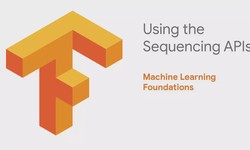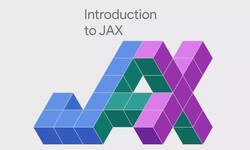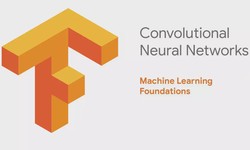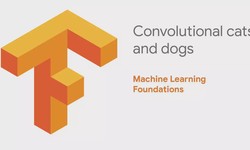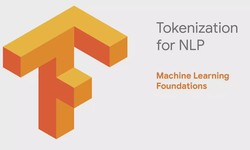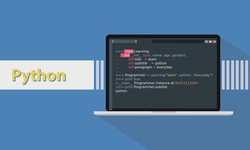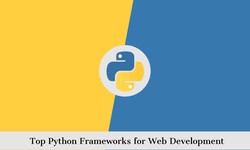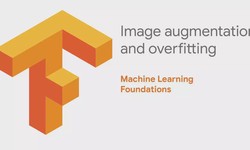programming
(174)
Dart 3 in Practice: What the Major Language Update Will Bring Us
Dart 3 is the most significant language update since Null Safety, and it will change a lot about how we write code and what libraries we use. You can listen to a podcast to understand what exactly is changing in the language. Records, Anonymous Data...
Jacob Enderson · 05 May 2023 · 114Machine Learning Foundations: Part 5 - Classifying real-world images
In this article we're going to look at how to use convolutional neural networks to classify complex features. In previsous part 4 - Coding with Convolutional Neural Networks, you took what you had learned about CNNS. And you saw how to improve the f...
Alex · 31 May 2020 · 49Machine Learning Foundations: Part 1 - What is ML?
Welcome to this series on Machine Learning Foundations. It's a course where you'll learn the fundamentals of building machine learning models using TensorFlow. The only thing that you'll need to know is a little bit of Python. So if you've tried to l...
Alex · 15 May 2020 · 128Machine Learning Foundations: Part 3 - Convolutions and pooling
In the previous part 2 - First steps in computer vision, you built a neural network that could recognize items of clothing. Now that you've looked at fashion example for computer vision, you've probably noticed a big limitation for computer vision...
Alex · 26 May 2020 · 81Machine Learning Foundations: Part 9 - Using the Sequencing APIs
In part 8: Introduction to Natural Language Processing, we looked at how you can tokenize words with simple APIs. This allowed you to turn words into numbers or tokens so that they can be more easily represented in a computer's memory. It's the first...
Alex · 23 June 2020 · 61Introduction to JAX (AI Adventures)
NumPy is fast, but how can we make it even faster? In this article, we're going to look at a new library from Google Research called JAX and see how it can speed up machine learning. JAX can automatically differentiate native Python and NumPy...
Alex · 16 May 2020 · 155Machine Learning Foundations: Part 2 - First steps in computer vision
In the previous article Part 1 - What is ML?, you got an introduction to machine learning, and you saw how it works from a programmer's perspective by having you create answers and data, and letting a computer infer the rules that determine them. Thi...
Alex · 23 May 2020 · 72Machine Learning Foundations: Part 10 - Using NLP to build a sarcasm classifier
Previous: Part 9 - Using the Sequencing APIs Over the last few parts, we haven't done much machine learning. Instead, we looked at how you can preprocess text data to get it ready for training machine learning models. In this part, you're going to p...
Alex · 25 June 2020 · 371Why My Teenage Code Was Terrible: Sorting Algorithms and Big O Notation
When I was about 15, I had a week of ‘work experience’. Americans would call that an ‘internship’, but that’s not really right: work experience is a thing in British schools that basically just gets the older kids out of...
Jacob Enderson · 11 May 2020 · 86Machine Learning Foundations: Part 4 - Coding with Convolutional Neural Networks
In the previous part 3 - Convolutions and pooling, you learned all about convolutions and how they can use filters to extract information from images. You also saw how to create pools that can reduce and compress your images without losing the vital...
Alex · 27 May 2020 · 58Machine Learning Foundations: Part 6 - Convolutional cats and dogs
Previous Part 5: Classifying real-world images In this part where we'll take what you've learned about convolutional neural networks in the previous few parts and apply them to a computer vision scenario that was a Kaggle challenge not that long ago...
Alex · 04 June 2020 · 60Are There Problems That Computers Can't Solve?
Are there problems that computers can’t solve? Even if you work with the cleverest programmers, even if you have infinite time and energy and more computing power than could possibly ever exist in the universe, are there some things that it wil...
Den W. · 12 May 2020 · 591Machine Learning Foundations: Part 8 - Tokenization for Natural Language Processing
Previous Part 7 - Image augmentation and overfitting Up to now, you've learned how machine learning works and explored examples in computer vision by doing image classification, including understanding concepts such as convolutional neural networks f...
Alex · 18 June 2020 · 12210 Python tricks for beginners
There's never an excess of useful tricks in Python. The more of them you learn, the more likely you'll be able to quickly tackle a challenge in practice. Or show your best side in a technical interview. In this article, I'll talk about tricks that ca...
Den W. · 24 August 2023 · 32What are the Top 10 Python Frameworks for Web Development in 2022?
The future of web development, as we know it, is definitely influenced by Python. With the aid of the right tools, Python allows developers to create fast, secure and maintainable solutions in an efficient manner. It has become one of the most popula...
AnnaSharland · 28 January 2022 · 118Machine Learning Foundations: Part 7 - Image augmentation and overfitting
Previous part 6 - Convolutional cats and dogs Over the last few articles, you've looked at convolutional neural networks and how they can be used for computer vision. You built classifiers for fashion, horses and humans and cats and dogs. But one the...
Alex · 08 June 2020 · 39



